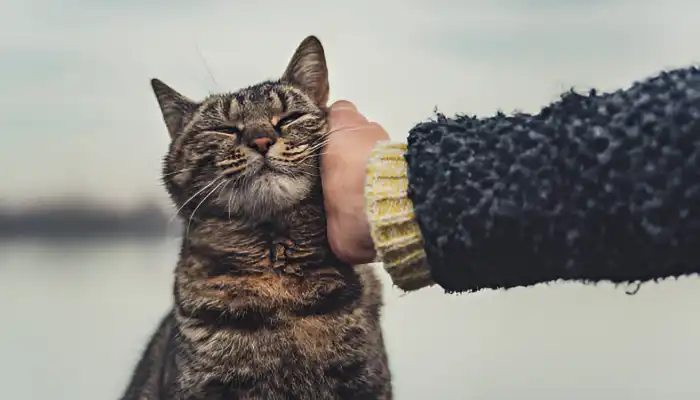How do cats say “yes”? You are not the only one asking yourself whether your feline friend consents to something or is on board with something. While humans agree to things verbally, cats do not consent using words.
They can, however, express their affirmation using body movements, their voice, and other actions. Knowing these signs enables you to connect with your cat better and take care of them more efficiently. This article will explain how cats tend to agree, what signs to look for, and how a cat translator can help you understand and motivate your pet to provide compliance.

Do Cats Understand ‘Yes’?
How do cats say “yes”? Cats can’t understand the word “yes” as humans do, but they can express agreement or approval through their actions. They associate positive reinforcement, such as tone, gestures, and rewards, with favorable situations.
How Cats Understand and React to People
- Cats give preference to body movements, voice, and routines instead of talking.
- They tend to learn by observing and receiving rewards rather than listening to instructions.
- Some cats who are trained can understand their names as well as phrases about eating and being stroked.
Do Cats and Dogs Understand ‘Yes’?
While dogs respond eagerly to commands, cats display more independent behavior. However, this doesn’t mean cats don’t understand approval. How do cats say “yes”? Here’s a comparison:
| Feature | Cats | Dogs |
|---|---|---|
| Response to “Yes” | Subtle (blinks, rubs) | Obvious (tail wag, jumping) |
| Training Style | Reward-based, independent | Command-based, obedient |
| Interaction | Observant, selective | Social, eager to please |
Despite their differences, how do cats say “yes”? They show approval in ways that might not be immediately obvious.
Ways Cats Say Yes
How do cats say “yes”? Cats may not say “yes” like humans, but they have their unique ways of showing approval. Understanding their subtle signs can help you bond better with your feline friend.
Signs Your Cat Agrees With You
Cats also demonstrate their comfort and willingness to accept situations via other forms of body movements:
- Slow blinking – This is an indicator from a relaxed site that is considered to be a ‘cat smile’.
- Head nudges and rubbing – An affection indication that expresses acceptance towards your existence.
- Tail up with a slight curve – A sign of joy and general readiness to receive and grant greetings.
- Relaxed posture and purring – These are signs indicating comfort together with acceptance.
- Kneading with paws – Commonly a sign of acceptance and contentment.
Sounds People Make to Show Agreement or Approval
Some felines make a lot of noise while others do not, but in some cases, the sounds produced can confirm agreement or approval:
- Soft meows – Felines do this to communicate they are pleased and appreciating the engagement.
- Trilling sounds – A sound made when the cat is excited or goes along with what is happening.
- Purring while interacting – Purring while in active interaction denotes a cat is at ease and encouraging or happy for the interaction.
- Chirping or murmuring – This is the external message a cat gives to demonstrate readiness to play and general positive disposition.
Signs of Positive Behavior That Mean ‘Yes’
As with many animals, their action implies their appreciation, including the following:
- Comes to Cuddle When Referred To – Indicates trust and readiness to engage.
- Permits Petting While Remaining Nearby – Displays comfort and approval.
- Follows You Around – Acts of love and agreement.
- Rubs Themselves Against You or Other Objects – Signifying acceptance, they rub to establish their territory.
Understanding the ways cats say yes helps strengthen your bond with your feline friend. Pay attention to their signals, and you’ll know when your cat is giving you a silent nod of approval!
How to Encourage Your Cat’s Good Behavior
Encouraging your cat’s good behavior strengthens your bond and makes life easier for both of you. With the right approach, you can guide your cat toward positive habits.
Treats and Praise Training Only
Cats are more responsive when treats or toys are given. Try to do the following:
- Giving them treats, gentle touching or games when they do something good serves as positive reinforcement.
- A particular voice is also helpful in giving them a sense of safety.
- Try to provide tasty snacks. Some cats would agree to give up something if they are given freeze-dried chicken or tuna instead.
Figuring Out What Your Cat Enjoys
Every cat is different, and understanding their needs can help you enhance communication:
- While some cats respond to gentle stroking, others like polite words said to them.
- Understanding their petting preferences (around the chin, cheeks, tail shaft) enhances trust.
- Maintaining a routine enables your cat’s feelings of safety and willingness to interact.
Now that you know how do cats say “yes”? Watch for these signs in your pet. Paying attention to their body language and behavior will strengthen your connection!
Why Won’t Your Cat Respond?
Every cat responds in different ways. If your cat does not exhibit any signs of agreement, there could be reasons behind it which are mentioned below.
Factors That Affect A Cat’s Response
- Different personality traits – A few cats are more self-sufficient and tend to keep to themselves more.
- Social environment – Changes in routine, stress, or new surroundings can alter behavior.
- Medical disturbances – A vet visit could be necessary if a normally responsive cat seems to be more aloof than usual.
Tips for Having Better Communication With Your Cat
- Watch them in their natural setting – Avoid initiating contact and allow your cat to come to you.
- Be persistent and patient – People learn to put their trust in others over time through favorable experiences.
- Employ gentle overtones and slow blinks – Encouraging your cat to feel secure and ready to interact.
Understanding why your cat won’t respond can help strengthen your bond. With patience and the right approach, you might just get the reply you’re looking for!
Conclusion
How do cats say “yes”? Cats possess a one-of-a-kind way of communicating approval which involves a combination of broad aspects like body language, vocalization, and behavior. These include slow blinking, soft purring, and following you around are all features of trust and approval.
Cats can foster a deeper bond of companionship by understanding and respecting their unique expressions. So, the next time you are pondering whether your cat says “yes”, there are signs to look out for, as they could likely be agreeing with you more often than you assume!
